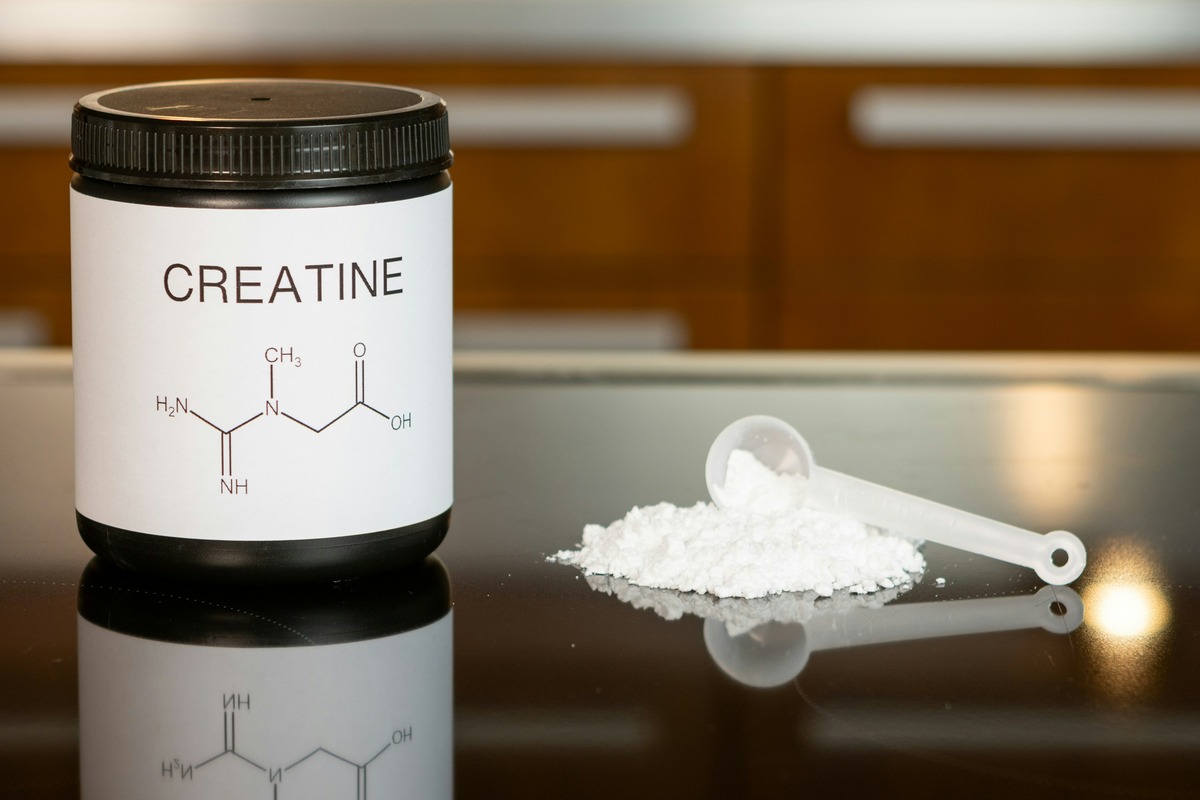Home>Health and Wellness>The Surprising Danger Of Sun Exposure While On Doxycycline


Health and Wellness
The Surprising Danger Of Sun Exposure While On Doxycycline
Published: February 2, 2024
Learn about the potential risks of sun exposure while taking doxycycline and how to protect your health and wellness. Stay safe in the sun!
(Many of the links in this article redirect to a specific reviewed product. Your purchase of these products through affiliate links helps to generate commission for Noodls.com, at no extra cost. Learn more)
Table of Contents
Introduction
Sunshine is often associated with feelings of warmth, joy, and vitality. The sun's rays can brighten our days and elevate our moods, but there's a lesser-known side to sun exposure that's particularly crucial for individuals taking doxycycline. This antibiotic, commonly prescribed to treat various bacterial infections, comes with a surprising caveat: it can significantly heighten the skin's sensitivity to sunlight.
For those unfamiliar with doxycycline, it is a potent medication used to combat a range of ailments, from acne to respiratory infections and beyond. However, what many may not realize is that while this antibiotic diligently fights off bacteria within the body, it also renders the skin more susceptible to the damaging effects of the sun's ultraviolet (UV) rays.
This unforeseen consequence can catch individuals off guard, especially those who are accustomed to basking in the sun without a second thought. The potential risks associated with sun exposure while on doxycycline are not to be taken lightly, as they can lead to severe sunburn, photosensitivity reactions, and long-term skin damage.
As such, it is essential for anyone prescribed doxycycline to be well-informed about the potential dangers of sun exposure during the course of their treatment. By understanding how doxycycline affects sun sensitivity, the risks involved, and the protective measures that can be taken, individuals can better safeguard themselves and maintain their skin's health while undergoing this medication.
In the following sections, we will delve deeper into the specific ways in which doxycycline interacts with sunlight, the potential consequences of sun exposure while on this antibiotic, and practical tips for minimizing the associated risks. It's crucial to grasp the nuances of this topic to ensure that individuals taking doxycycline can enjoy the outdoors safely and without compromising their well-being.
Read more: The Surprising Danger Of Nice Narcissists
How Doxycycline Affects Sun Sensitivity
Doxycycline, a powerful antibiotic belonging to the tetracycline class, possesses a unique characteristic that can significantly impact an individual's skin when exposed to sunlight. This medication, while effectively combating bacterial infections, can heighten the skin's sensitivity to ultraviolet (UV) rays, particularly those in the UVA spectrum. When ingested, doxycycline becomes absorbed into the bloodstream and distributed throughout the body, including the skin, where it can induce phototoxic reactions upon exposure to sunlight.
The mechanism through which doxycycline affects sun sensitivity is multifaceted. One primary factor is its photosensitizing properties, which can lead to an exaggerated response of the skin to UV radiation. When the skin is sensitized by doxycycline, it becomes more susceptible to the harmful effects of sunlight, increasing the risk of sunburn and other adverse reactions. This heightened sensitivity is attributed to the medication's ability to absorb UV light and generate reactive oxygen species, triggering cellular damage and inflammation within the skin.
Furthermore, doxycycline can interfere with the skin's natural defense mechanisms against UV radiation. It can disrupt the skin's barrier function and compromise its ability to protect against sun-induced damage. This can result in an impaired capacity to repair UV-related DNA damage, leaving the skin more vulnerable to the harmful effects of sun exposure.
It is important to note that the impact of doxycycline on sun sensitivity is not immediate. Instead, it accumulates in the body over time, gradually increasing the skin's reactivity to sunlight. As a result, individuals may not experience heightened sun sensitivity until several days or weeks into their doxycycline treatment, making it crucial to remain vigilant about sun protection throughout the entire course of medication.
The combination of doxycycline's photosensitizing properties and its potential to compromise the skin's natural defense mechanisms underscores the need for individuals taking this antibiotic to exercise caution when exposed to sunlight. By understanding how doxycycline affects sun sensitivity, individuals can take proactive measures to mitigate the risks associated with sun exposure while on this medication, safeguarding their skin health and overall well-being.
The Risks of Sun Exposure While on Doxycycline
Sun exposure while on doxycycline can pose significant risks to an individual's skin health and overall well-being. The heightened sun sensitivity induced by this antibiotic can lead to a range of adverse effects, underscoring the importance of understanding and mitigating these potential risks.
One of the primary risks associated with sun exposure while on doxycycline is severe sunburn. The medication's photosensitizing properties can amplify the skin's reaction to UV radiation, leading to a heightened susceptibility to sunburn. Even minimal sun exposure, such as spending a short time outdoors without adequate protection, can result in rapid and severe sunburn in individuals taking doxycycline. This can cause considerable discomfort, pain, and skin damage, potentially necessitating medical attention.
In addition to sunburn, individuals on doxycycline are at risk of experiencing photosensitivity reactions. These reactions can manifest as an exaggerated response of the skin to sunlight, often leading to a range of symptoms such as redness, blistering, itching, and swelling. Photosensitivity reactions can be particularly distressing and may significantly impact an individual's daily activities and quality of life. Furthermore, in some cases, these reactions can result in long-lasting skin damage, including hyperpigmentation and increased vulnerability to sun-induced aging.
Moreover, prolonged sun exposure while on doxycycline can contribute to the development of long-term skin damage. The cumulative effects of UV radiation can lead to premature aging of the skin, characterized by the formation of wrinkles, fine lines, and age spots. Additionally, chronic sun exposure can increase the risk of skin cancer, including both melanoma and non-melanoma skin cancers. Given the heightened sun sensitivity induced by doxycycline, the risks of long-term skin damage and skin cancer are amplified, emphasizing the critical need for sun protection during the course of treatment.
Furthermore, individuals taking doxycycline may also be at risk of experiencing systemic effects related to sun exposure. Excessive sun exposure can lead to symptoms such as heat exhaustion and heatstroke, particularly in hot and humid climates. These systemic effects can pose serious health risks and may necessitate immediate medical intervention.
In light of these risks, it is imperative for individuals on doxycycline to prioritize sun protection and minimize their exposure to UV radiation. By understanding the potential consequences of sun exposure while on this antibiotic, individuals can take proactive measures to safeguard their skin health and mitigate the associated risks. Implementing comprehensive sun protection strategies, as discussed in the following section, is essential for minimizing the potential harms of sun exposure during doxycycline treatment.
Tips for Protecting Yourself from Sun Exposure
Protecting yourself from sun exposure while on doxycycline is paramount for maintaining skin health and minimizing the risks associated with heightened sun sensitivity. Implementing comprehensive sun protection measures can significantly reduce the likelihood of adverse reactions and long-term skin damage. Here are essential tips for safeguarding yourself from sun exposure during doxycycline treatment:
-
Apply Broad-Spectrum Sunscreen: Prioritize the use of broad-spectrum sunscreen with a high sun protection factor (SPF) when venturing outdoors. Look for a sunscreen that offers protection against both UVA and UVB radiation. Apply it generously to all exposed skin areas, including the face, neck, arms, and legs, and reapply at regular intervals, especially after swimming or sweating.
-
Seek Shade During Peak Hours: Minimize sun exposure during the peak hours of 10 a.m. to 4 p.m. when UV radiation is most intense. Seek shade under umbrellas, trees, or other forms of shelter to reduce direct sun exposure and lower the risk of sunburn and photosensitivity reactions.
-
Wear Protective Clothing: Opt for sun-protective clothing, including lightweight long-sleeved shirts, pants, and wide-brimmed hats, to shield your skin from UV radiation. Clothing with a tight weave offers enhanced protection, and some brands offer clothing with built-in UPF (ultraviolet protection factor) for added sun defense.
-
Use Sunglasses: Protect your eyes and the delicate skin around them by wearing sunglasses that block UVA and UVB rays. Look for sunglasses labeled as providing 100% UV protection to ensure comprehensive shielding from harmful sunlight.
-
Avoid Tanning Beds and Lamps: Refrain from using tanning beds or lamps, as they emit concentrated UV radiation that can exacerbate the photosensitizing effects of doxycycline and increase the risk of adverse skin reactions.
-
Stay Hydrated: Maintain adequate hydration by drinking plenty of water, especially when spending time outdoors. Proper hydration supports overall skin health and can help mitigate the effects of sun exposure.
-
Be Mindful of Reflections: Be mindful of reflective surfaces, such as water, sand, and snow, which can intensify UV radiation and increase the risk of sunburn. Take extra precautions in these environments and adjust your sun protection measures accordingly.
By diligently adhering to these sun protection tips, individuals on doxycycline can mitigate the risks associated with heightened sun sensitivity and enjoy outdoor activities with greater peace of mind. Prioritizing sun protection not only safeguards skin health during the course of doxycycline treatment but also promotes long-term well-being by minimizing the potential harms of sun exposure.
Conclusion
In conclusion, the interaction between doxycycline and sun exposure underscores the critical need for individuals undergoing this antibiotic treatment to prioritize comprehensive sun protection. The surprising danger of heightened sun sensitivity induced by doxycycline necessitates a proactive approach to safeguarding skin health and minimizing the potential risks associated with UV radiation.
By understanding how doxycycline affects sun sensitivity, individuals can make informed decisions and implement effective sun protection strategies. The medication's photosensitizing properties and its potential to compromise the skin's natural defense mechanisms highlight the importance of diligent sun protection measures throughout the course of treatment.
The risks of sun exposure while on doxycycline, including severe sunburn, photosensitivity reactions, long-term skin damage, and systemic effects, emphasize the need for heightened awareness and proactive sun protection. These potential consequences underscore the importance of minimizing sun exposure, seeking shade during peak hours, and utilizing broad-spectrum sunscreen to mitigate the risks of adverse reactions and long-term skin damage.
Furthermore, the implementation of sun-protective clothing, sunglasses, and hydration practices can contribute to comprehensive sun protection, promoting skin health and overall well-being during doxycycline treatment. By adhering to these essential tips, individuals can enjoy outdoor activities with greater peace of mind, knowing that they are taking proactive measures to safeguard their skin from the heightened sun sensitivity induced by doxycycline.
Ultimately, the surprising danger of sun exposure while on doxycycline serves as a reminder of the intricate relationship between medication and sun sensitivity. By staying informed, exercising caution, and prioritizing sun protection, individuals can navigate their doxycycline treatment with greater confidence and minimize the potential risks associated with heightened sun sensitivity. This proactive approach not only supports skin health during the course of medication but also contributes to long-term well-being by mitigating the adverse effects of sun exposure.
In essence, by acknowledging the impact of doxycycline on sun sensitivity and embracing comprehensive sun protection, individuals can enjoy the outdoors safely and without compromising their skin health. This understanding empowers individuals to take charge of their well-being, ensuring that the sunshine remains a source of joy and vitality while undergoing doxycycline treatment.















